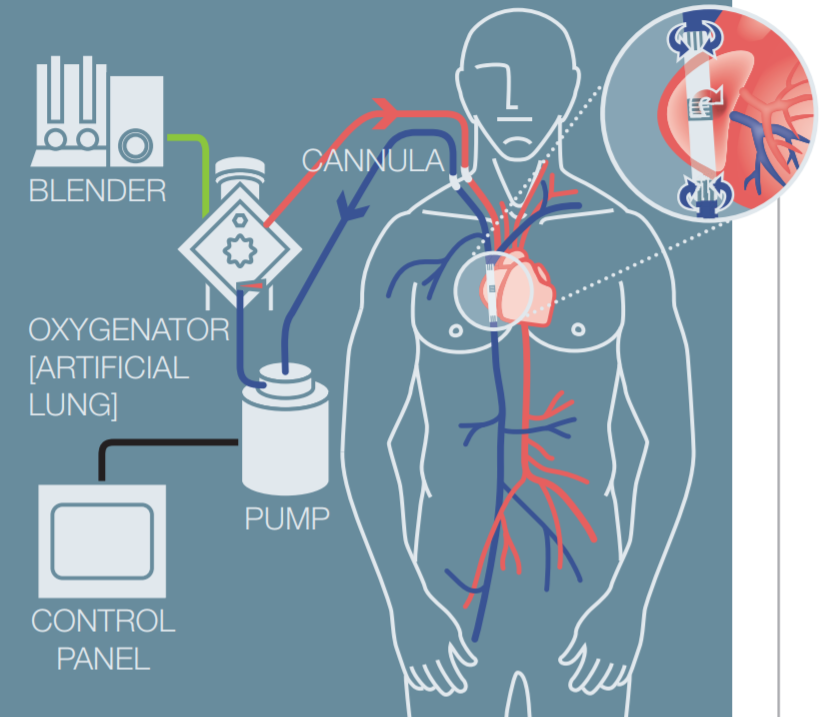Today we are honored to welcome Dr. Roy Brower, Professor of Medicine and Medical Director of the MICU at the Johns Hopkins Hospital. Dr. Brower has over 150 publications, numerous national teaching awards and is the most recent recipient of the ATS Life Time Achievement Award (wow!). Today he has been kind enough to cross the highway and give us just a sampling of his immense knowledge of the disease process known as ARDS. This a topic that could take an entire day of lectures to understand, yet Dr. Brower is able to simplify it in a way that only 50 minutes is enough to start to understand just how important pressure can be.
Clinical Pearls (special thanks to Dr. Neil Christopher)
- ARDS – first described in 1967 – associated with beginning of the use of mechanical ventilation
- Used large Vt (10-15ml/kg) & PEEP 5-12 => leads to VILI (atelectrauma, volutrama)
- First report of VILI – 1964 – Large tidal volume used in OR leads to loss of surface tension (loss of surfactant) which is reversible
- PEEP noted to have lung protective effects
- Driving Pressure – Difference between Pplat & PEEP
- Meta-analysis of trials of lung protective ventilation (3562 patients)
- Variable associated with outcome – Driving pressure, FiO2, pH, Apache III score
- Determinants – Vt & Compliance
- Meta-analysis of trials of lung protective ventilation (3562 patients)
- Why care about it?
- Mortality is associated with driving pressure, not PEEP
- Increasing driving pressure with fixed PEEP leads to higher mortality
- Increasing PEEP with fixed driving pressure has no effect on mortality
- Decreasing driving pressure with fixed PEEP leads to decreased mortality
- Mortality is associated with driving pressure, not PEEP
- In patients with lung protective ventilation (Vt < 7ml/kg & Pplat < 30)
- Mortality difference associated with difference in driving pressure
- Significant increase in mortality once driving pressure > 14
- When increasing PEEP leads to decrease in driving pressure survival improves
- What can we do about it?
- Decrease Vt – Use goal driving pressure rather than goal Vt – Maybe 6ml/kg is not ideal for all patients
- Find optimum PEEP
- Higher PEEP is not always better – 3 trials did not show significantly improved mortalitiy (ARDSnet, Canadian, French)
- Change in PEEP in these trials did not lead to change in driving pressure
- ARDSnet Tidal Volume trial – change in Vt lead to a decrease in driving pressure of nearly 9
- Higher PEEP can help to prevent atelectrauma but may predispose to volutrauma
- Effects of PEEP are variable depending on the amount of recruitable lung
- Grasso et al (Am J Resp CCM 2005) – PEEP responders are separated from non-responders by their ability to increase Vt when PEEP is increased – Responders also increased their P/F ratio
- Higher PEEP is not always better – 3 trials did not show significantly improved mortalitiy (ARDSnet, Canadian, French)
- Stress index – slope of pressure curve with constant inspiratory flow (patient must be relaxed)
- SI <1 atelectrauma; SI >1 = volutrauma; SI =1 ideal
- Predicts lung injury
- Stress index in “lobar” ARDS (hypothesis not recruitable)
- Required downward PEEP adjustments to get stress index = 1
- No significant change in P/F ratio but decreased pCO2 (less dead space)
- Lower inflammatory mediators after lowering PEEP
- Driving pressure can give same information as stress index – Stress index =1 has the lowest driving pressure
- Special monitoring equipment not needed, Inspiratory efforts allowed, Pt must be relaxed during exhalation
- A change to driving pressure of just 3-4 cmH2O can lead to a 5-10% change in mortality!
Suggested Reading
- Amato MB, Meade MO, Slutsky AS, Brochard L, Costa EL, Schoenfeld DA, et al. Driving pressure and survival in the acute respiratory distress syndrome. N Engl J Med. 2015;372(8):747–55.[NEJM Link]
- The Acute Respiratory Distress Syndrome Network. Ventilation with lower tidal volumes as compared with traditional tidal volumes for acute lung injury and the acute respiratory distress syndrome. The Acute Respiratory Distress Syndrome Network. N Engl J Med. 2000 May 4;342(18):1301-8.[PubMed Link]
- JBriel M, Meade M, Mercat A, Brower RG, Talmor D, Walter SD, Slutsky AS, Pullenayegum E, Zhou Q, Cook D, Brochard L, Richard JC, Lamontagne F, Bhatnagar N, Stewart TE, Guyatt G. Higher vs lower positive end-expiratory pressure in patients with acute lung injury and acute respiratory distress syndrome: systematic review and meta-analysis. JAMA. 2010 Mar 3;303(9):865-73.[Pubmed Link]





